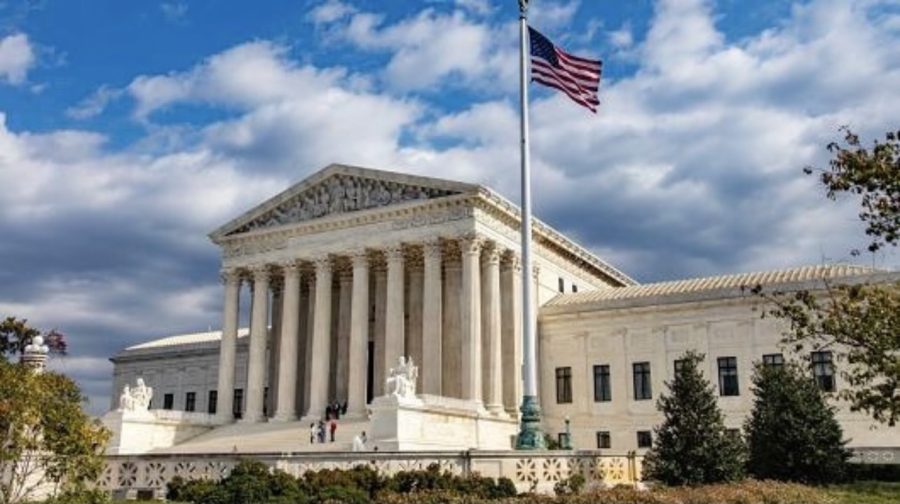University President Marvin Krislov provides insight into latest affirmative action Supreme Court cases
November 2, 2022
Diversity in higher education, particularly admissions, has been a contentious subject for the past 60 years, following the decision of Brown v. Board of Education. Since then, numerous cases have been brought to the Supreme Court regarding the use of race as a deciding factor in admissions.
Historically, the Supreme Court has upheld such policies, as long as they adhered to rigorous standards and the given university has been able to prove such policies are the only way to achieving a diverse student body. Despite this, on Oct. 31, the Supreme Court heard two oral arguments in Students for Fair Admissions v. University of North Carolina and Students for Fair Admissions v. President & Fellows of Harvard College that challenged the way universities can use race in their admissions processes.
“I would say when I first started taking courses at Pace, and being an African American, the student body did not look like me, and neither did the professors,” said Monisha Moore, the University’s Associate Director for Community Standards, Title IX Investigator and UNV 101 instructor.
“It is very important for me to make a difference that I didn’t see while I was in school, which is the reason I decided to become a UNV 101 instructor this semester,” Moore continued. “This position allows incoming first-year students of color to see someone else of color and at least feel a sense of belonging and connection.”
The two cases heard on Monday challenged the historically upheld precedent set by Grutter v. Bollinger, which confirmed in a 5-4 majority decision that universities’ have the right to use race as one of the determining factors in admissions as a way to achieve a diverse student body. In Students for Fair Admissions v. University of North Carolina, SFFA alleged that the university violated the 14th Amendment by using race as one of the deciding factors in their admissions process.
In the other case, Students for Fair Admissions v. President & Fellows of Harvard College, SFFA claimed that Harvard’s use of race in admissions caused them to unfairly discriminate against Asian applicants. Both Harvard University and the University of North Carolina maintain that they adhered to the legal requirements set in Grutter v. Bollinger and therefore their admissions practices weren’t discriminatory.
University President Marvin Krislov was the University of Michigan’s general counsel, representing Lee Bollinger, the University of Michigan’s President while serving as Bollinger’s Vice President at the time. Since his time there, the state of Michigan has banned the use of affirmative action practices at universities and the percentage of Black enrollment has dropped dramatically, with Black students making up only four percent of the student body.
“To me, these cases are really at heart about the way to make sure that the promise of the American Dream is really open to people of all backgrounds,” Krislov said. When asked about how the cases might affect affirmative action policies in university admissions processes, he said “I think regardless of the way these cases go, it’s still a very important question and if you look at the data, it suggests that the gaps are growing rather than narrowing.”
Krislov’s interpretation of these cases and the idea of equal opportunity behind the American Dream echoed similar sentiments from the late Judge Robert L. Carter, who was one of the primary litigators behind the Brown v. Board of Education decision. Carter opened his oral arguments explaining how Black Americans were denied equal protection of the law and therefore cannot secure equality in educational opportunities.
The same landmark Supreme Court case that helped affirm Black Americans’ rights to an education is the legal argument behind both of the Students For Fair Admissions cases.
“A century of resistance to race neutrality followed, but this Court’s landmark decision in Brown finally and firmly rejected the view that racial classifications have any role to play in providing educational opportunities,” said Patrick Strawbridge, the lawyer who delivered the oral argument for the petitioners in the case SFFAs v. The University of North Carolina.
The Supreme Court has seen similar arguments made in regard to a color-blind interpretation of Brown v. Board of Education. In a 2007 Supreme Court case, Parents Involved in Community Schools v. Seattle School District No. 1, Chief Justice John Roberts delivered the 5-4 majority opinion in which he quoted the exact words Carter used in his opening arguments for the Brown case.
“We have one fundamental contention which we seek to develop in the course of this argument, and that contention is that no State has any authority under the equal protection clause of the 14th Amendment to use race as a factor in affording educational opportunities among its citizens,” said Carter in his oral argument in reference to the segregation of schools that was taking place at the time.
In 2007, the Court’s five conservative Justices used this logic to support the decision that public schools could not use race as a deciding factor in admissions to aid reintegration attempts, attesting to the fact that the conservative court today is likely to side with Students for Fair Admissions.
Despite the court’s ruling in 2007, when asked about what contributes to the need for affirmative action programs at selective universities, Krislov stated that the majority of the issue stems from the fact that segregation still occurs in public schools.
When asked about the systemic issues facilitating the need for affirmative action admissions procedures at universities, Krislov stated, “What we talked about when I was at Michigan is that there are two factors. One was that the pipeline of eligible students was not as strong—diverse ethnicity in particularly underrepresented groups, [like] Latinos, Blacks and Native Americans. The conditions that people were coming to the University from meant that this was an essential element to their education; they were growing up in communities that were largely separated and segregated.”
“We said, when I was there, that the University cannot change the way people live and in fact, a lot of this goes back to public schools because they are based on neighborhoods to a large extent,” he continued.
While the University does employ affirmative action procedures in its admissions, it does not use the applicant’s race in the same manner that these universities do. Instead, the University uses a holistic process where they consider all aspects of the applicant. These types of admissions processes typically measure a student’s test scores or GPA in relation to their unique experiences and attributes.
“We work with a lot of high schools with diverse populations and we end up achieving what we think is a very diverse student body, and we work very hard to make that the case,” Krislov said.
With a conservative majority and the Court’s willingness to overturn past precedent, many are eager to find out if the practice of affirmative action in university admissions will be sustained. The case will be decided before the term ends, meaning opinions might not be released until this coming June. With socioeconomic polarization at an all-time high, the Court’s decision will have an impact on deciding the future of Black Americans’ place in higher education.













